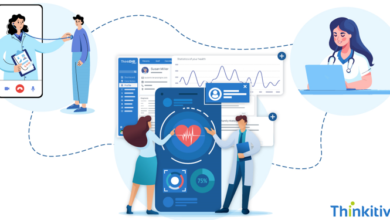Medical Detox in 2025: What’s Changing in the Fight Against Addiction

Fighting addiction is hard. In 2025, the battle is changing. This post shows new ways to beat addiction. Keep reading to learn more.
Federal Policies and Initiatives in 2025
In 2025, the government is reforming Medicaid to better cover addiction treatment. New federal laws are also making it easier for people to access these treatments.
Medicaid reforms for addiction treatment
Medicaid reforms are changing how addiction treatment gets covered, aiming to make it easier for people with substance use disorders to get help. These changes include better payment models for providers and greater flexibility in the types of treatments covered.
This means more services, like inpatient detox, outpatient programs, and dual diagnosis treatment, will be available to Medicaid recipients. These Medicaid reforms represent a vital step forward in improving access to addiction treatment services, says a health policy expert.
The government is also focusing on reducing workforce shortages in the mental health field as part of these reforms. By increasing funding for behavioral health plans, the aim is to support more comprehensive and effective substance abuse treatments.
This approach acknowledges the complex needs of those struggling with addiction by offering a wider range of recovery options.
Expansion of treatment access through federal legislation
Federal legislation in 2025 broadened access to addiction treatment. Policymakers focused on making more resources available. These changes aimed to reduce barriers for those seeking help with substance use disorders. Increased funding for Medicaid programs means more people can now receive care.
New laws also encourage states to implement innovative programs. Many areas saw a rise in outpatient detox options, which allow patients to recover at home while still receiving support.
Experts estimate that these efforts will significantly decrease overdose mortality rates over time. Access to rehabilitation services is crucial in fighting the opioid epidemic and providing housing supports assists individuals during their recovery journey.
Trends in Addiction Treatment Approaches
Many facilities now accept medication as a more recognized option for treating addiction. They also integrate traditional therapies with mindfulness practices to support comprehensive recovery.
Increased acceptance of pharmacological interventions
Pharmacological interventions play a significant role in addiction treatment today. Many healthcare providers now embrace medications to help those facing substance use disorders. These drugs assist individuals in managing withdrawal symptoms and cravings, making recovery more attainable. They can improve success rates for people during detox.
The stigma around using medication is diminishing. More people acknowledge that addiction is a medical issue requiring effective solutions. Innovations like fentanyl vaccines are becoming prevalent, providing new hope for those dealing with opioid dependence.
This shift opens doors to improved rehabilitation programs that focus on holistic healing and support, including therapies that integrate mindfulness practices.
Integration of mindfulness therapies
The increased acceptance of pharmacological interventions leads to new paths in addiction recovery. Mindfulness therapies play a vital role in these methods. These approaches focus on self-awareness and being present in the moment. They help individuals manage stress and cravings, reducing withdrawal symptoms during detox.
Therapies like meditation and yoga offer coping strategies for those battling substance use disorders. Studies show that practicing mindfulness can lower relapse rates by promoting emotional stability.
This change helps people feel more connected to their treatment journey, fostering lasting addiction recovery.
The Role of Technology in Medical Detox
Technology plays a crucial role in medical detox. Wearable devices monitor patients’ recovery progress, offering real-time feedback to improve treatment outcomes.
Wearable technology for monitoring recovery
Wearable technology plays a crucial role in monitoring recovery from substance use disorders. These devices track various health metrics, such as heart rate and sleep patterns. Users can receive real-time feedback on their progress. This immediate data helps individuals maintain accountability during their recovery journey.
Many wearables now include features that alert users to potential triggers or stressors. This proactive approach improves the effectiveness of outpatient detox programs. By incorporating these devices into treatment plans, healthcare providers can better support patients while reducing stigma around addiction. Such innovations lead individuals to healthier choices and improve outcomes in addiction recovery.
Teletherapy and virtual care advancements
Teletherapy has transformed the way people access addiction treatment. In 2025, many recovery programs now offer virtual sessions. Patients can connect with therapists from their homes. This makes it easier to get help no matter where they live.
Virtual care also reduces stigma around seeking support for substance use disorders. People feel more comfortable discussing their issues in a familiar environment. Technology enhances these interactions through secure platforms and video calls.
Patients benefit from flexible scheduling and immediate access to professionals whenever they need assistance.
Innovations in Medical Interventions
Innovations in medical interventions are shaping addiction treatment. New approaches like fentanyl vaccines and brain stimulation therapies show promise for those struggling with substance use disorders.
Fentanyl vaccines and other medication-assisted treatments
Fentanyl vaccines show promise in treating addiction to opioids. These vaccines work by triggering the body’s immune system to attack fentanyl molecules. This reduces the drug’s effects and helps prevent overdose situations.
Other medication-assisted treatments have also gained traction. Drugs like buprenorphine and naltrexone are gaining acceptance as effective options for managing withdrawal symptoms.
They help stabilize patients, making recovery more manageable. Alongside these options, healthcare providers increasingly combine behavioral therapies with medications to address substance use disorders effectively.
Emerging techniques like brain stimulation therapies
Fentanyl vaccines and other medication-assisted treatments are making waves in addiction care. Emerging techniques like brain stimulation therapies show promise too. These innovative approaches target specific areas of the brain to help reduce withdrawal symptoms. They aim to ease cravings for substances.
Studies suggest that these therapies can boost recovery rates for individuals struggling with substance use disorders. Some options include transcranial magnetic stimulation (TMS) and deep brain stimulation (DBS).
Both methods offer new hope in fighting the opioid epidemic and enhancing treatment outcomes. As research continues, more people may access these advanced interventions in their recovery journey.
Conclusion
Medical detox in 2025 brings new hope in the fight against addiction. Increased access to treatment and innovative approaches make recovery more attainable. Technology plays a big role, helping people track their progress and connect with support. As society embraces these changes, stigma around addiction starts to fade. Together, we can create a brighter future for those facing substance use disorders.



